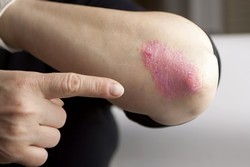A novel target of autoimmunity
The aryl hydrocarbon receptor (AhR) is a transcription factor that recognises toxic aromatic hydrocarbons such as dioxins and polyphenols. It is evolutionarily conserved and mediates the activation of an inflammatory subset of CD4+ T cells, the Th17 cell subset. These cells are important in the defence against fungal infections, but they also play a pathogenic role in many autoimmune diseases. The primary objective of the EU-funded AHRIMMUNITY (The influence of Aryl hydrocarbon receptor ligands on protective and pathological immune responses) project was to investigate the effect of several AhR agonists, such as chemicals and physiological ligands, on Th17 cell differentiation. To this end, they exposed Th17 cells to these agonists and performed gene expression analysis. Results indicated that IL-22 and the cytochrome P450 metabolising enzymes CYP1A1 and CYP1B1 were among the most upregulated genes alongside IL-1receptor and genes involved in lipid metabolism. In the mouse model of experimental autoimmune encephalomyelitis (EAE), AhR ligand application in the context of immunisation determined the outcome of pathology. Dioxin exhibited a strong immunosuppressive effect and resulted in loss of Th17 cell activation as well as an absence of any autoimmune phenotype. The physiological AhR ligand FICZ caused a similar reduction in EAE pathology but when it was co-administered with an antigen an opposite effect was seen. Collectively, these observations led AHRIMMUNITY researchers to speculate that prolonged signalling by AhR ligands that were not degraded by the induced metabolic enzymes — such as in the case of dioxin — prohibited antigen presentation and Th17 cell activation. To establish the effects of AhR activation on different cell types, scientists used mice with AhR deletion. They observed that in the absence of AhR, there was an enhanced recruitment of neutrophils and overexpression of pro-inflammatory cytokines and chemokines. This response was validated in a mouse model of human psoriasis where AhR deficiency in keratinocytes was responsible for the exacerbated autoimmune phenotype. Furthermore, treatment of patient skin biopsies with the AhR physiological agonist ameliorated the expression of psoriasis-related genes, whereas exposure to an antagonist induced pro-inflammatory gene expression. Overall, AHRIMMUNITY provided mechanistic evidence of AhR functions in diverse cell types and on inflammatory immune responses under physiological conditions. Long term, manipulation of AhR has the potential to serve as a therapeutic intervention against autoimmune diseases.







